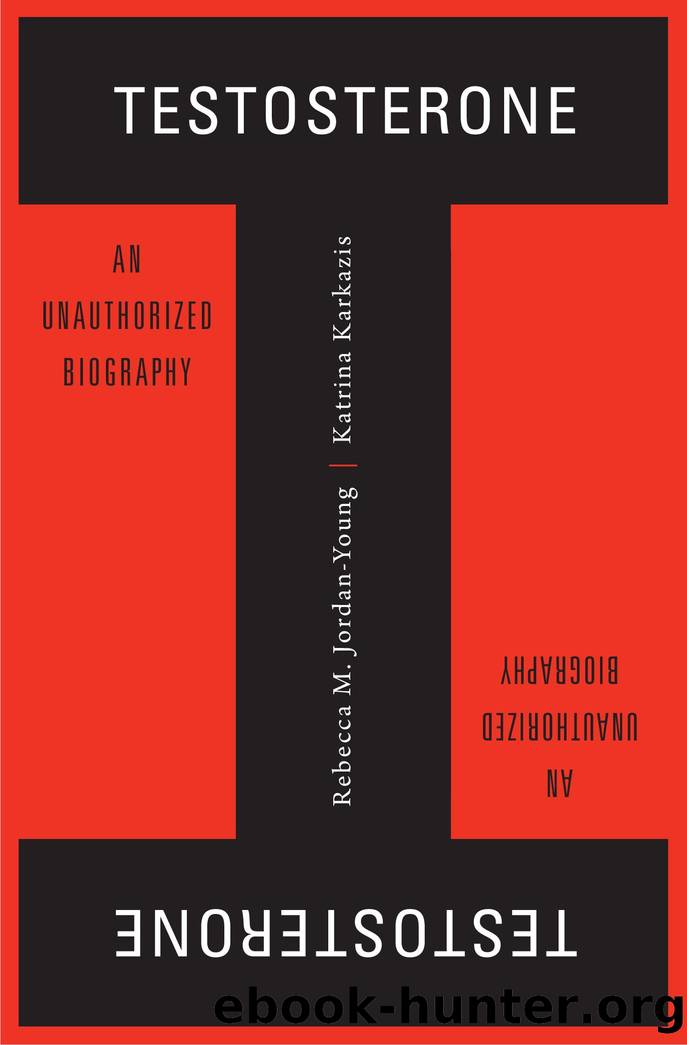Testosterone by Rebecca M. Jordan-Young & Katrina Karkazis

Author:Rebecca M. Jordan-Young & Katrina Karkazis
Language: eng
Format: epub
Publisher: Harvard University Press
Racing and Classing Parental Investments
Theories of parental investment and life history strategy are nestled within a broader scientific literature comparing reproduction and sexuality across human populations. The language of “investments” and trade-offs between quality and quantity of offspring should already give a clue about where this goes, suggesting that in some groups parents care for their children and in other groups people just indiscriminately reproduce. There is a strong resonance between that idea and racialized and classed narratives of parenting and sexuality. In fact, this is the exact underpinning of the nineteenth- and twentieth-century eugenicists’ fears of “lower” races and classes out-reproducing Europeans. Similarly, against a backdrop that pathologized mother-headed households, twentieth-century scholars used evolutionary theory to scrutinize the emerging “reproductive strategies” of children reared in “father-absent” families. By the time the challenge hypothesis came on the scene, there was already a long-standing research narrative about parenting that had strong racial and class dimensions.20
To be clear, most studies of parenting and T are done by researchers who do not deliberately racialize parenting in their studies; anthropologists, in particular, generally don’t even frame their subjects in terms of race. Instead, they explore T dynamics across or within populations and ethnic groups, where the term “ethnic” is used to refer to specific cultural and linguistic groups that might have distinct patterns of pair bonding and parenting. They use the term “population,” on the other hand, to refer to extremely large, generally geographically based groups, such as “non-Western,” “Western,” or “North American” men, or to groups differentiated by the prevalence or legal status of polygamy. While none of the anthropological studies we found explicitly suggest that ethnic, regional, or other population patterns for T map onto “racial” groups, general trends in scientific concepts on race and discursive slippage between “population” and “race” might encourage such readings, especially among those readers who are inclined to think of “ethnic” as a more modern or acceptable word for race. Ramya Rajagopalan and colleagues have pointed out that the concept of a population, understood as a “bounded, genetically differentiated group,” “permit[s] ideas of race as biology to persist and sanitize[s] the study of human genetic differences in an attempt to diffuse some of the post–World War II anxieties around race.”21
To examine the subtle slippage between study specific groups and larger populations, consider Martin Muller and colleagues’ 2009 comparison of testosterone and fatherhood status in two geographically proximate peoples in Tanzania, the Datoga and the Hadza, the latter of which is widely reported to be the last group of nomadic foragers in the country. After a close comparison of the two groups, the researchers zoom out to consider how their findings might fit into broader global patterns that show T is not reliably related to partnership and parenting in “non-Western populations”: “Cross-cultural variation in testosterone responses to marriage and fatherhood could potentially result from differential patterns of investment in mating and parenting effort, even among married fathers.… If North American men typically invest more in marital bonds and
Download
This site does not store any files on its server. We only index and link to content provided by other sites. Please contact the content providers to delete copyright contents if any and email us, we'll remove relevant links or contents immediately.
When Breath Becomes Air by Paul Kalanithi(7261)
Why We Sleep: Unlocking the Power of Sleep and Dreams by Matthew Walker(5640)
Paper Towns by Green John(4169)
The Immortal Life of Henrietta Lacks by Rebecca Skloot(3826)
The Sports Rules Book by Human Kinetics(3587)
Dynamic Alignment Through Imagery by Eric Franklin(3488)
ACSM's Complete Guide to Fitness & Health by ACSM(3467)
Kaplan MCAT Organic Chemistry Review: Created for MCAT 2015 (Kaplan Test Prep) by Kaplan(3422)
Introduction to Kinesiology by Shirl J. Hoffman(3299)
Livewired by David Eagleman(3121)
The River of Consciousness by Oliver Sacks(2992)
Alchemy and Alchemists by C. J. S. Thompson(2911)
The Death of the Heart by Elizabeth Bowen(2901)
Descartes' Error by Antonio Damasio(2731)
Bad Pharma by Ben Goldacre(2727)
Kaplan MCAT Behavioral Sciences Review: Created for MCAT 2015 (Kaplan Test Prep) by Kaplan(2491)
The Gene: An Intimate History by Siddhartha Mukherjee(2491)
The Fate of Rome: Climate, Disease, and the End of an Empire (The Princeton History of the Ancient World) by Kyle Harper(2435)
The Emperor of All Maladies: A Biography of Cancer by Siddhartha Mukherjee(2430)
